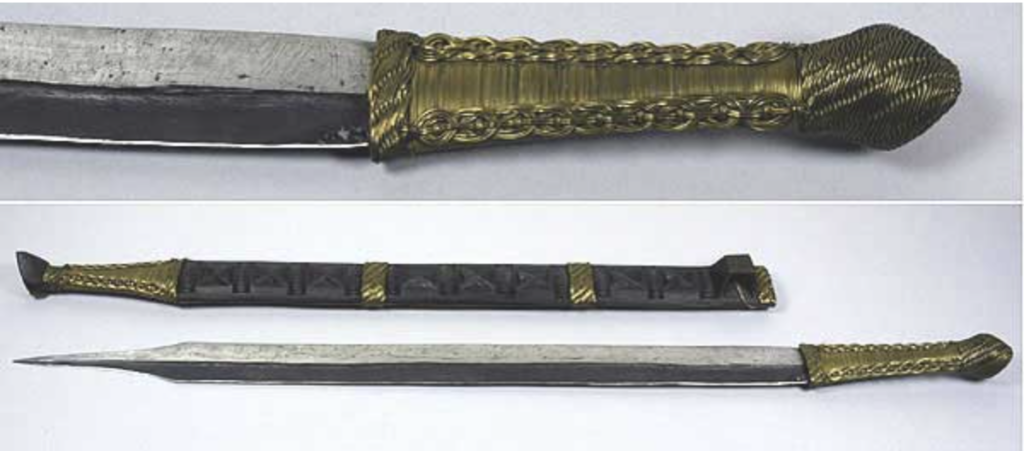



Streaming on The Cinema of Ideas from 7-21 March, Restitution in Motion is an online season of films and discussions exploring historical and new approaches to restitution.
In this creative written response to the programme, Dr Lennon Mhishi (researcher at the University of Oxford’s Pitt Rivers Museum) considers the forms and ways that restitution can occur.
━━━━━━━━━━━━━━━━━━━━━━━━━━━━━━━
This is an extract from a larger piece of writing by Dr Lennon Mishi that you can access here.
I have returned to one particular object at University of Oxford’s Pitt Rivers Museum, described as a sword. This bakatwa, as it is called in what we understand as Shona, occupies an interesting space for me as evidence of some of the materialities of museumisation that emanate from the oppressive colonial regulatory frameworks. In a colonial setting where this object, described as a ritual sword, is also read as a weapon and disarming the local population is a necessary process of extraction and domination, the knife references, in addition to the weapons in the museum, the intersections of cosmology and imperial materialities. What is contained here are also the traces of lineage and ancestral worlds.
The qualities of a subject-object are thus understood not on the basis of what material exists in context but out of it, out of time. There is, of course, challenging work underway at the Pitt Rivers that is making these connections and recognising the multiple meanings and uses that material that has been museumised has to different communities worldwide.
The task or the demand for reanimation comes when there is a wider reckoning of what it has meant for countries to sustain histories of cultural destruction and what attempts to restitute might look like. Material that has become transformed over time, acquiring new qualities and energies — chemical and toxic, spiritual and symbolic — might not be reanimated but disposed of. Ancestors and other human parts kept in museums may need rest and dignity, decent burials and mourning.

A challenge arises when there is a perception that the films and narratives about restitution are at risk of reproducing the histories of domination and extraction that are being challenged. At epistemic and material levels, the questions of where the demand emanates from and who leads the conversation matter. This, at least as far as the work, refuses to reproduce the coloniality it seeks to escape. If we have historical film and sound archives, out of which more film and sound work is produced, which remain inaccessible to the communities made subjects of this conversation, then what is being restituted? What substantive shifts can we recognise that cease to make restitution merely symbolic but a transformative process that potentially revitalises cultural spaces as sites forging different futures?
I agree that restitution cannot be about return alone, although it is a crucial part without which we wouldn’t be where we are in the process. We must also be alert to the enduring coloniality of the attendant infrastructures that have been subsidised and are subsidised by ‘cultural’ institutions. Restitution is inseparable from the broader sociopolitical and economic entanglements within which the question of culture has always been entangled.
Where communities recognise the material as living, and in the case of film and sound, where this material can be mobilised in the present and future, contemporary art offers a way to engage the complexity of these histories and reimagine them into the future.